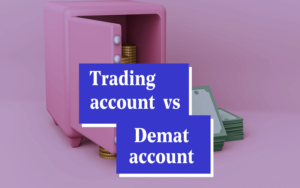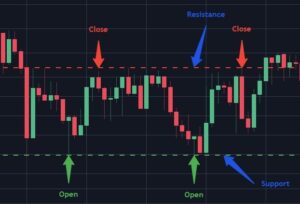How Charts Can Lead the Way to Profitability

In the intricate world of forex trading, charts serve as the backbone of market analysis, providing traders with a visual representation of currency price movements over time. These charts are crucial tools for traders, enabling them to interpret market trends, patterns, and potential turning points. With a variety of chart types and indicators available, understanding forex charts is fundamental for anyone looking to navigate the volatile waters of currency trading successfully. This article will delve into the significance of forex charts, explore different types of charts, and discuss how they can be utilized to make informed trading decisions.
The Role of Forex Charts in Trading
Forex charts depict the historical and real-time movements of currency prices, offering a graphical representation that simplifies complex market data. This visualization helps traders to quickly assimilate vast amounts of information, facilitating the identification of trends, patterns, and market sentiment. By analyzing these charts, traders can forecast potential price movements and make strategic trading decisions. Essentially, forex charts are not just tools for viewing price action; they are the lens through which traders interpret the market’s language.
Types of Forex Charts
1. Line Charts
Line charts are the simplest form of forex charts, drawing a single line from one closing price to the next. They provide a clear and straightforward view of a currency pair’s overall direction over a selected time frame. While line charts are great for a quick assessment of price movements, they lack the detailed information provided by more complex chart types.
2. Bar Charts
Offering more detail than line charts, bar charts represent a higher level of information, including the opening, high, low, and closing (OHLC) prices for each period. Each bar on the chart illustrates the price range of a currency pair within a specific time frame, with the left tick showing the opening price and the right tick indicating the closing price. Bar charts are particularly useful for identifying volatility and market range.
3. Candlestick Charts
Candlestick charts are a favorite among forex traders due to their visual appeal and the abundance of information they provide. Similar to bar charts, they display the OHLC prices but in a more visually intuitive manner. The “body” of the candlestick shows the opening and closing prices, while the “wicks” or “shadows” represent the high and low prices. Candlestick patterns can indicate potential market reversals or continuation patterns, making them invaluable for technical analysis.
Utilizing Charts for Trading Decisions
Forex charts are more than just visual aids; they are essential instruments for conducting technical analysis. Traders use various indicators and patterns found in these charts to predict future price movements. For example, moving averages can indicate the direction of the trend, while oscillators like the Relative Strength Index (RSI) can signal overbought or oversold conditions. By combining these tools and analyzing chart patterns, traders can devise strategies to enter and exit trades with higher precision.
The Importance of Understanding Forex Charts
For anyone venturing into the forex market, mastering the art of reading charts is non-negotiable. These charts are the map to the treasure trove of trading opportunities that the forex market presents. Whether it’s recognizing a bullish reversal pattern on a candlestick chart or identifying a trendline breakout on a bar chart, the ability to interpret forex charts accurately can significantly enhance a trader’s potential for success. As with any skill, proficiency in chart analysis comes with practice and continuous learning. By dedicating time to study and analyze forex charts regularly, traders can develop the keen insight needed to thrive in the world’s largest financial market.







